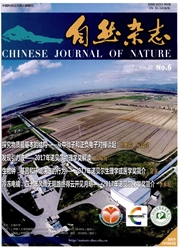

 中文摘要:
中文摘要:
来自137Cs时标和210Pb活度的信息揭示了岱海现代快速沉积过程,其平均质量堆积速率和平均沉积速率分别达0.4059g·cm-2·a-1和0.8em·a-1,与邻近区域湖泊快速的现代沉积速率相近。这种快速的现代沉积可能应归因于人为活动、流域自然风化及沙尘沉积等的综合贡献。通过对岱海现代沉积物含水率、密度、粒度和碳酸盐含量的分析.发现存在约1971—1975和2002—2005年两次快速沉积事件,对应于沉积物含水率降低、密度显著增大、粒度增粗、碳酸盐含量锐减,而SiO2等陆源组分含量显著增加。岱海现代沉积物元素相关分析获得三个聚类组分:A组(Si、Ti、Nb、Zr、Hf)、B组(Al、K、Ga、As、Rb、Y、CaO)和C组(Na、Mg、P、Sr、Fe2O3、Pb、Ba)。粗粒沉积物中A组元素含量高、B组元素含量低,碳酸盐含量低;细粒沉积物中A组元素含量低、B组元素含量高。碳酸盐含量高;而C组元素与A、B组元素相关性不显著。
 英文摘要:
英文摘要:
The high sedimentation rate was deduced from 137Cs and 210Pb radioactivity in recent sediments of Lake Daihai, in southeastern Inner Mongolia of China. The mean mass accumulation rate was about 0.4059 g cm-2 a-1 and the mean sedimentation rate was about 0.8 cm a-1 similar to those of Lake Xiarinao, Hongjiannao and Bojianghaizi. Such a high sedimentation rate was possibly attributed to human activity, natural weathering and aeolian deposits. By analyzing of water content, density, grain size and carbonate content in recent sediments of Lake Daihai, we found two high sedimentation rate events during about 1971--1975 AD and 2002--2005 AD. During these two periods, water content and carbonate content were low, but the density, grain size and terrigenous constituents were high. Based on correlation analysis, we divided the elements into three groups, namely group A (Si, Ti, Nb, Zr, Hf) , group B (A1, K, Ga, As, Rb, Y, CaO) and group C (Na, Mg, P, St, Fe2O3, Pb, Ba). High element contents in Group A but low in Group B were found in coarse grain size sediments; while low element contents in Group A but high in Group B were found in fine grain size sediments. Elements in Group C, however, were insignificantly correlated with those in both group A and group B.
 同期刊论文项目
同期刊论文项目
 同项目期刊论文
同项目期刊论文
 期刊信息
期刊信息
